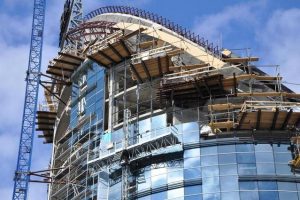 Time is money in the construction business. Any disruption – from device breakdowns to needed upkeep – can be bothersome and pricey. And tasks can take a major hit for every day that a revenue-generating piece of equipment is out of service awaiting a replacement part.
Time is money in the construction business. Any disruption – from device breakdowns to needed upkeep – can be bothersome and pricey. And tasks can take a major hit for every day that a revenue-generating piece of equipment is out of service awaiting a replacement part.
So, those in building and device leasing or crane hire should find brand-new ways to optimise their companies and prevent disturbances, particularly as competitors from larger business grow. While it can be challenging, dealing with after-sales service will help make plant hire services more effective.
After-sales service, the service provided after the preliminary sale of a brand-new item, is frequently considered as a margin and profits opportunity. However, having a well-oiled after-sales service operation – particularly for suppliers of building devices – can have a genuine influence on performance and be differentiated from brand names and dealerships in the area.
Below are 3 essential after-sales service locations where building business and plant leasers must focus on to increase effectiveness, income, revenues and consumer commitment.
Service Components Stock Management
Handling service parts stock has constantly been challenging for producers. And now – with the boom in e-commerce sales, growth of SKUs and need for quicker shipment from consumers – stock management is developing into more headaches than ever before. Yet welcoming contemporary management services can help businesses find stock success.
Embracing a cloud management platform system can be a game-changer for suppliers of building and construction devices. These services connect into existing ERP systems, permitting organisations to track parts and remove outdated parts. They can also decrease expenses – an approximated 25 percent of a business’s overall stock worth. Most notably, stock management services decrease downtime by guaranteeing that the ideal parts are where they have to be at the correct time.
Optimise Service Components Prices
 When it pertains to increasing margins, along with staying competitive and rewarding, rates are among the crucial levers for any business. Nevertheless, lots of devices rental businesses continue to use Excel spreadsheets instead of a sales management system and cost-plus prices methods to figure out service parts costs, typically leaving loans on the table while doing so.
When it pertains to increasing margins, along with staying competitive and rewarding, rates are among the crucial levers for any business. Nevertheless, lots of devices rental businesses continue to use Excel spreadsheets instead of a sales management system and cost-plus prices methods to figure out service parts costs, typically leaving loans on the table while doing so.
Rates ought to not be fixed. Rather, it ought to be the outcome of a range of aspects, from weather conditions to the day of the year. For instance, Amazon saw a 27 percent boost in sales in 2013 after it generated a vibrant price method for all drake low loaders and their largest cranes. All aspects have to be connected under one umbrella to change rates and obtain precise, actionable information – despite time of day, location or currency – to guarantee a business is continually winning the price game and offering products.
Move to the Cloud
To compete in today’s congested building and construction area, businesses need to have a total view of company operations. Efficiency details and production updates need to be readily available to make choices quickly and easily in today’s always-on business community. To make sure the very best BI is readily available, businesses have to move beyond the silos of conventional computing and move to the cloud.
By the end of 2016, the general public cloud market alone made ₤166 billion – and for good reason. Moving to the cloud makes it possible for businesses to combine all their information into a single view. This is the embodiment of performance, making essential insights and understanding what is readily available from anywhere in the world without any downtime.
Performance in the building classification is being redefined daily. And while aiming to remain on the cutting-edge can be complicated, it is also an enormous chance to own development and earnings that has to be welcomed.
